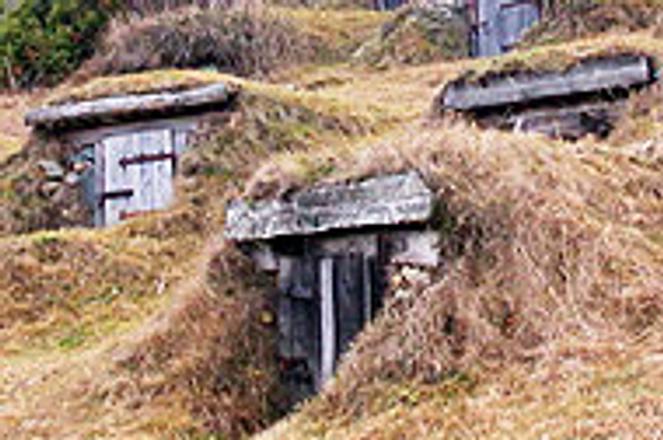TINY doors lead to cool places.photo: Michaela Brezinová
IN THE HEART of Slovakia, under the northern hillside of the impressive 1,948-metre-high Kráľova hoľa sits Liptovská Teplička. This peculiar municipality, famous for its virgin landscape and preservation of folk traditions, hides a cool European rarity - limestone cellars.
Even the oldest living inhabitants were not around to remember the origin of these interesting formations. They have been there for several centuries and are used by the Teplička citizens to this day.
The hills surrounding the local amphitheatre are literally strewn with tiny doors. Hidden inside lie alcoves of various shapes and sizes dug into the limestone base, some reaching over three metres. There are as many as 419 such "holes" topped with a shelter made of logs.
"Each family has its own cellar. They have been inherited from generation to generation for ages. It is not complicated to transfer ownership; they are simply inherited from clan to clan," explained Jozef Mezovský, the city's mayor.
Each cellar has a registration number, apparently used by the locals so that they can distinguish who has a mess near his or her "natural refrigerator".
The cellars are a popular attraction for visitors to the municipality. But while the tourists admire them as something extraordinary, for the Teplička inhabitants they are an everyday thing.
The cellars imitate the environment of a cave and thanks to an optimal temperature and humidity, they preserve crops of potatoes and other vegetables the whole year round. One such "shelter for vegetables" can hide up to 30 or more sacks of potatoes.
The mayor owns a cellar himself. "It's an excellent thing, which functions well even in our modern age. Now, while everyone is thinking of various new types of refrigerators, we use the invention of our ancestors, which is fantastic. And, I think, also more prosperous for health," said Mezovský.
Also impressive are the terrace fields surrounding the municipality, which testify to the hard work of former generations. They look like large staircases to heaven.
Apart from the cellars, Teplička also lures visitors with its folk dance and music. To keep traditions alive, the city holds an annual Folk Festival under Kráľova hoľa on the first weekend of August. The two-day event, featuring folk ensembles from around Slovakia and abroad, is a celebration of folk dance, music, and singing, but also a mosaic of traditions, crafts, and food.
Michaela Brezinová is a journalist with the Tatranský Korzár daily.


